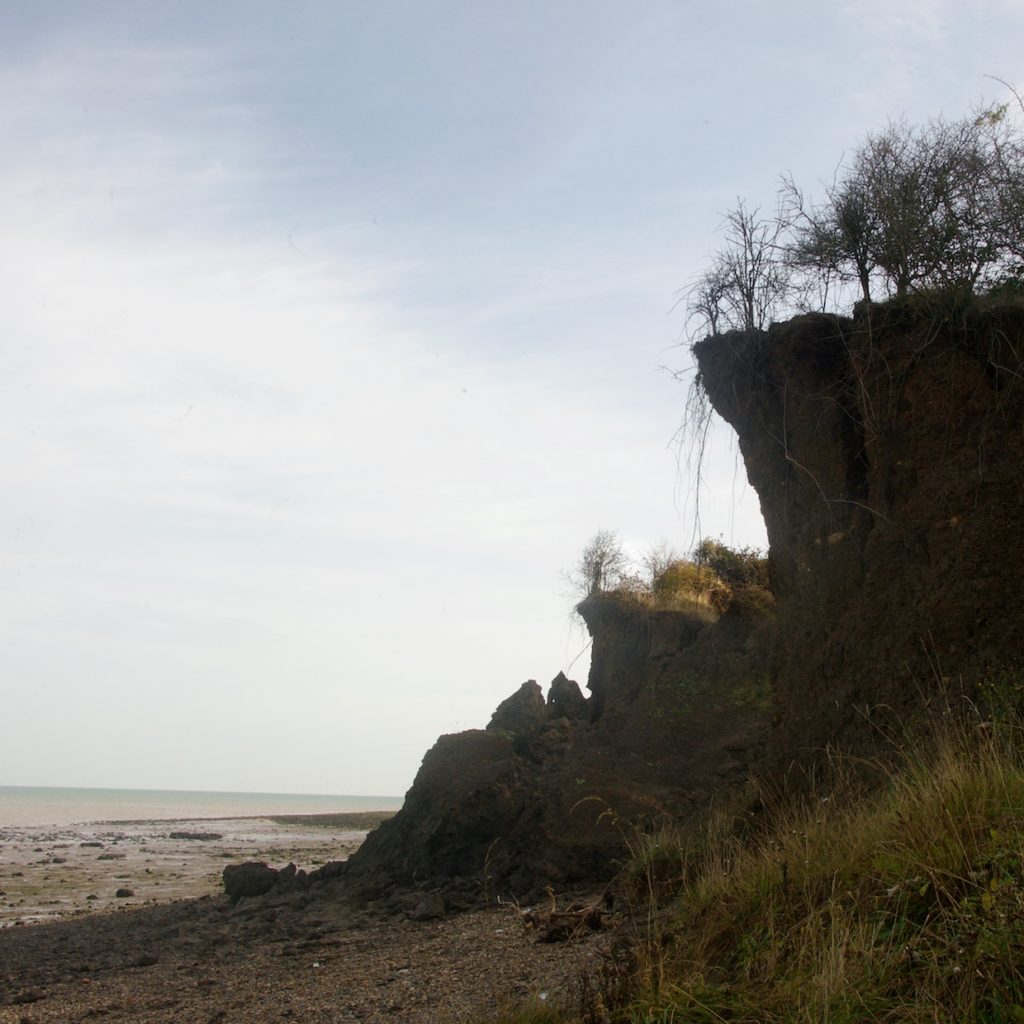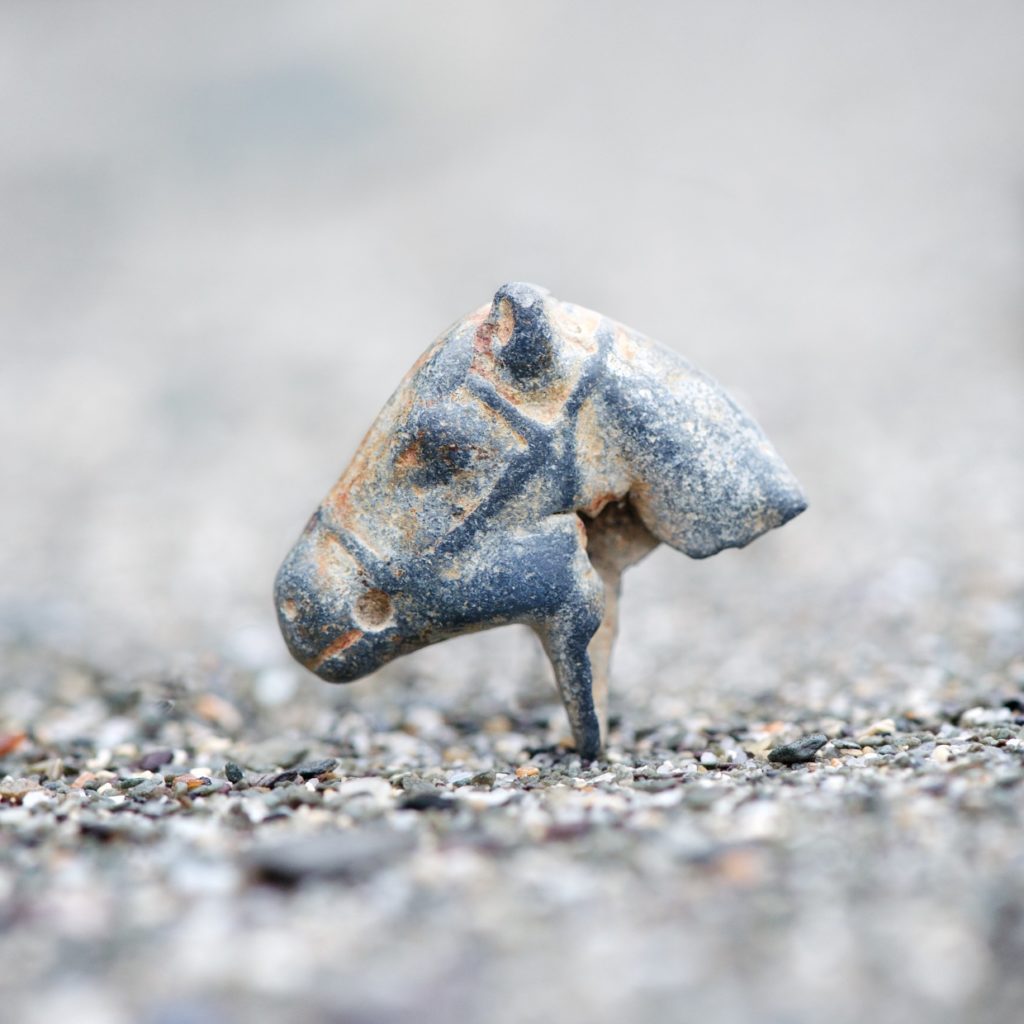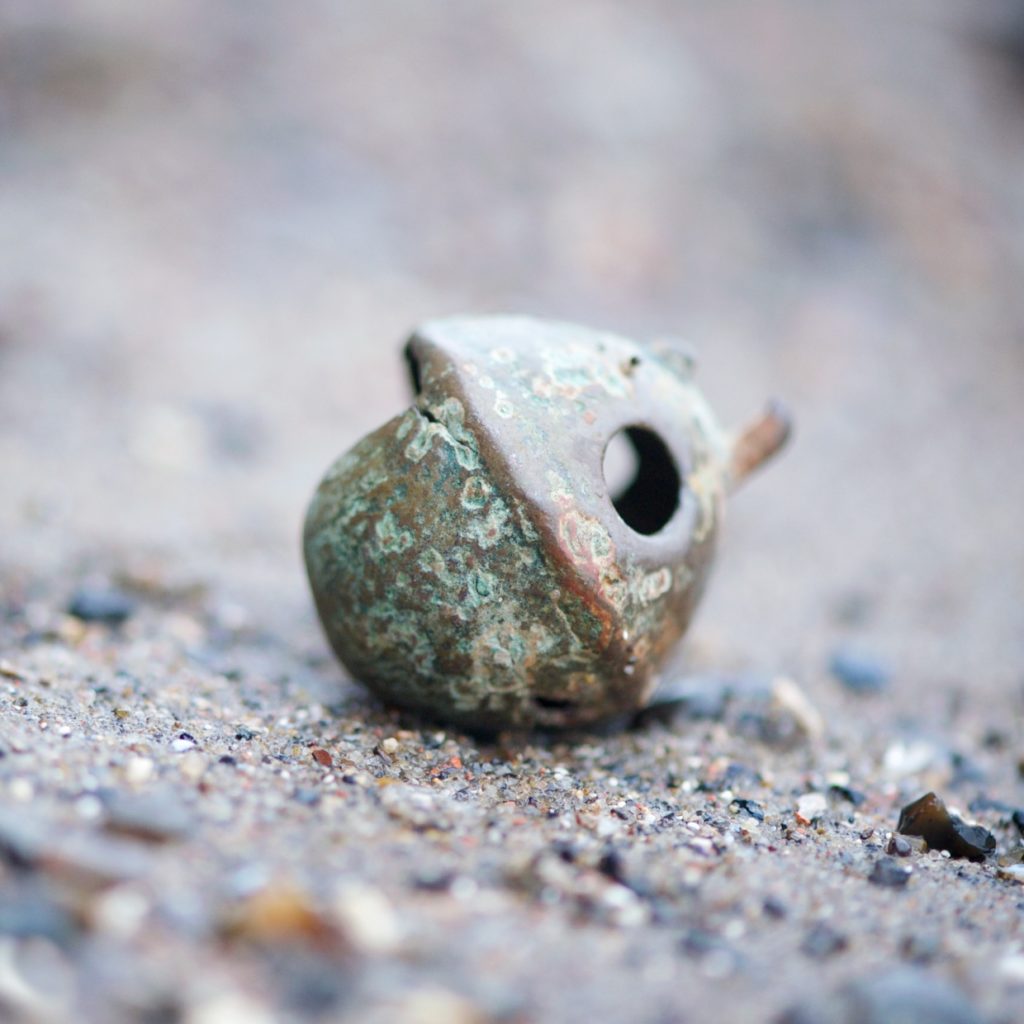A final extract from our July Book of the Month – Lisa Woollett’s Rag and Bone: a family history of what we’ve thrown away.

We set off along the stony beach, past gulls and oystercatchers strung out at the mud edge, waiting for the tide to fall. Offshore, odd shapes were just beginning to break the surface, appearing in silhouette against the low sun: a tyre and a concrete slab, the handlebars and front wheel of a bike. Presumably they’d all come down with the cliff, with the heaviest of the debris left stranded where it fell. As we headed towards Warden Point – which is no longer a point – the strange, unstable landscape felt almost immediately remote. On exposure to air, London clay weathers to brown, and here it rose above the shore in odd peaks and turrets. In places a crumbling, teetering pinnacle was held together by no more than the remains of a single scrubby bush, its exposed roots curling out into the air.
We stopped first at a place where metal collects. It was a spot I had searched in the past, and on a previous visit I’d turned up what I considered an extraordinary find. It was the grey of lead I noticed first, standing out amongst the rust-coloured pyrites, although it was only on picking it up that I realized it was a horse’s head. I was delighted, as the legend everyone grows up with on the Isle of Sheppey is of Sir Robert de Shurland and his horse Grey Dolphin. On school trips we would be taken to see his medieval tomb in the island’s Minster Abbey, where Sir Robert’s reclining effigy lies beside a horse’s head emerging from the waves.

As Baron of Sheppey, Sir Robert’s rights included bloodwyte (the right to fine servants for the shedding of blood), childwyte (the right to fine the fathers of illegitimate children), and ‘Wreck of the Sea’, which entitled him to any wreckage found ‘within the limits of his domain, whether ashore, “bumping” or even floating, within three miles of low-water mark’.
In order to claim the wreck as his, though, the Baron had to be able to touch it with the tip of his lance at low tide; so, to make the most of this, he is said to have trained his horses to swim. The best was Grey Dolphin, thought to be depicted by the horse’s head carved into the tomb beside him.
The story we were told is that in the fourteenth century Sir Robert killed a monk. With the Church seeking retribution, the Baron heard that the King was anchored off Sheppey on the Nore sandbank, so saddled Grey Dolphin and swam out to his ship. He made a full confession and was pardoned by the King, then turned Grey Dolphin and swam back to shore. Although the exhausted horse managed to reach the beach at Minster, a local witch was waiting. ‘You think that horse has saved your life,’ she told the Baron. ‘But it will be the death of you.’
In response, he drew his sword and cut off the horse’s head. A year later, though, he was walking that same stretch of shore when he injured his toe kicking what he thought was a rock. But it was the skull of Grey Dolphin. Within days Sir Robert’s toe had festered and, back home at Shurland Hall, he died.

Standing on the shore holding the lead horse’s head – actually the remains of a nineteenth-century child’s toy – I swore quietly to myself at my luck. What were the chances of finding it where I had, on a beach little more than a mile from Shurland Hall? (At the age of twelve, a friend and I had camped alone in its isolated ruins, but got so scared we ran back to her house after dark.)
Today, at the same spot with Laurie, I found several modern coins – a grand total of eleven pence, but so salt-corroded I was initially hopeful they were older – and a bell. It was small and round, and although bent and damaged, it still had the pea inside. I rinsed it and gave it a shake, and although the sound wasn’t exactly musical, it did – after a fashion – still ring. Later I learned it was a crotal bell: an animal bell dating to the seventeenth or eighteenth century. Known also as rumble bells, they were often attached to horses’ harnesses to warn of approaching horse-drawn vehicles on quiet country lanes. On reflection, it seemed poignant to have found it where I did: where the old road once led out to the church, and the village and so much farmland has been lost to the sea. Presumably, it was also as close as I’d get to hearing church bells toll beneath the waves.
*
Rag and Bone is out now, published by John Murray, and is available here, priced £20.00.
Read Frances Castle’s review of the book here, and a previous extract here.